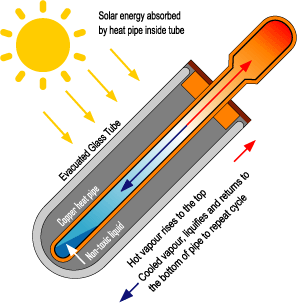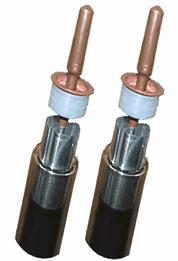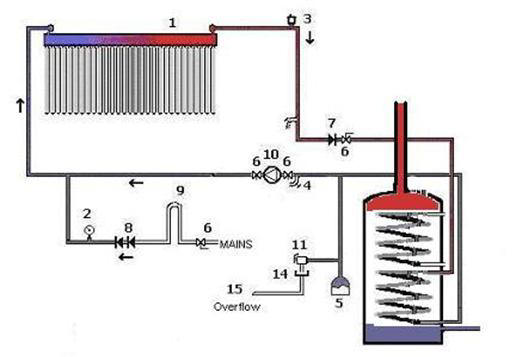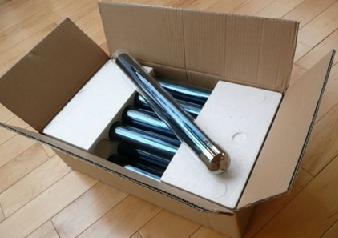Solar Water Heating has been used for hundreds if not thousands of years to heat water. With advances in technology solar water heating systems have become more and more efficient, withEvacuated Tube Solar Water Heatings offering efficiencies of well over 90%. That means that more than 90% of the sun’s energy landing on a surface is converted into heat which can be used to heat water. This is also one of the cheapest (fastest payback period) renewables, with costs starting from pennies per Watt comparing to pounds per Watt for PV Solar and Wind Turbine power generation.

Vacuum or Evacuated Tubes are made from glass – typically ultra-strong and heat resistant Pyrex with a double wall construction. The glass on the inner tube is coated on its outer surface with an absorbant coating, and on its inner surface with a reflective coating. Inside each tube all air is removed making a vacuum and a copper heat pipe is run through the centre of the tubes. Most of the infra-red radiation (i.e heat) from the sun is absorbed by this sealed heat pipe which contains an anti-freeze type liquid. (See our article: Heat Transfer Fluid in Solar Water Heating).
As heat rises, hot vapours from the heat transfer fluid rise up to the top of the heat pipe where its copper tip connects with a header pipe through which more fluid flows. This hot fluid is then pumped through a coil of pipe inside the hot water tank (acting as a heat exchanger) with the end result that the water gets hotter and the heat transfer fluid gets cooler.
The heat transfer fluid then continues its journey around the system and back out to the solar water heater to be reheated.
The copper at the tip of the heat tube can reach well over 200 degrees easily heating water to 90 degrees celcius on hot days and to 60 degrees celcius even in the winter. This simple system is completely sealed and needs minimal maintenance over its 20+ years life.

The advantage of using evacuated tubes is that they will work even during the coldest winter months unlike old style Flat Plate Solar Collectors. The vacuum insulates the heat tube from being cooled much by the ambient temperature which could be well below freezing. Winter sun can easily heat water to 50+ degrees even in the depths of the coldest season. Even if it is very cloudy and very cold, enough sunlight gets through to keep the tubes well above freezing and so they will still be pre-heating the water which can then be heated further by a standard immersion heater or gas burner reducing the costs of heating the water.

The fitting of a Solar Water Heating system using evacuated tubes can be carried out by any able DIY enthusiast with basic plumbing skills. The solar tubes are usually put on modules of 10 or 20 tubes which are then connected via insulated copper piping to a suitable hot water cylinder. Pictured above is a schematic showing the installation of a modular evacuated tube solar water heating system.
A Solar Water Heating Pump Controller is a vital component which ensures that heat transfer fluid is only circulated when the temperature of the fluid exiting the solar panel is above the temperature of the hot water tank.
Buy an Evacuated Tube Water Heating System

Until around five years ago (article updated January 2014) it was difficult for the amateur to get their hands on an economical array of evacuated tubes in order to install a DIY solar water heating system. That has now all changed thanks to globalisation and eBay! Click here to view the latest Evacuated Tube listings on eBay today. Prices start at around £20 per evacuated tube when purchased in batches of 10+ tubes. Make sure to check the length of the tubes you purchase as these range from 50cm to 200cm often at similar prices.
Complete kits including water tank and plumbing fittings are also available with prices from under £l;1500 for a small house system (120 litre tank and 16 tubes), to over £3000 for a large family home (300 litre with 30+ tubes) system.